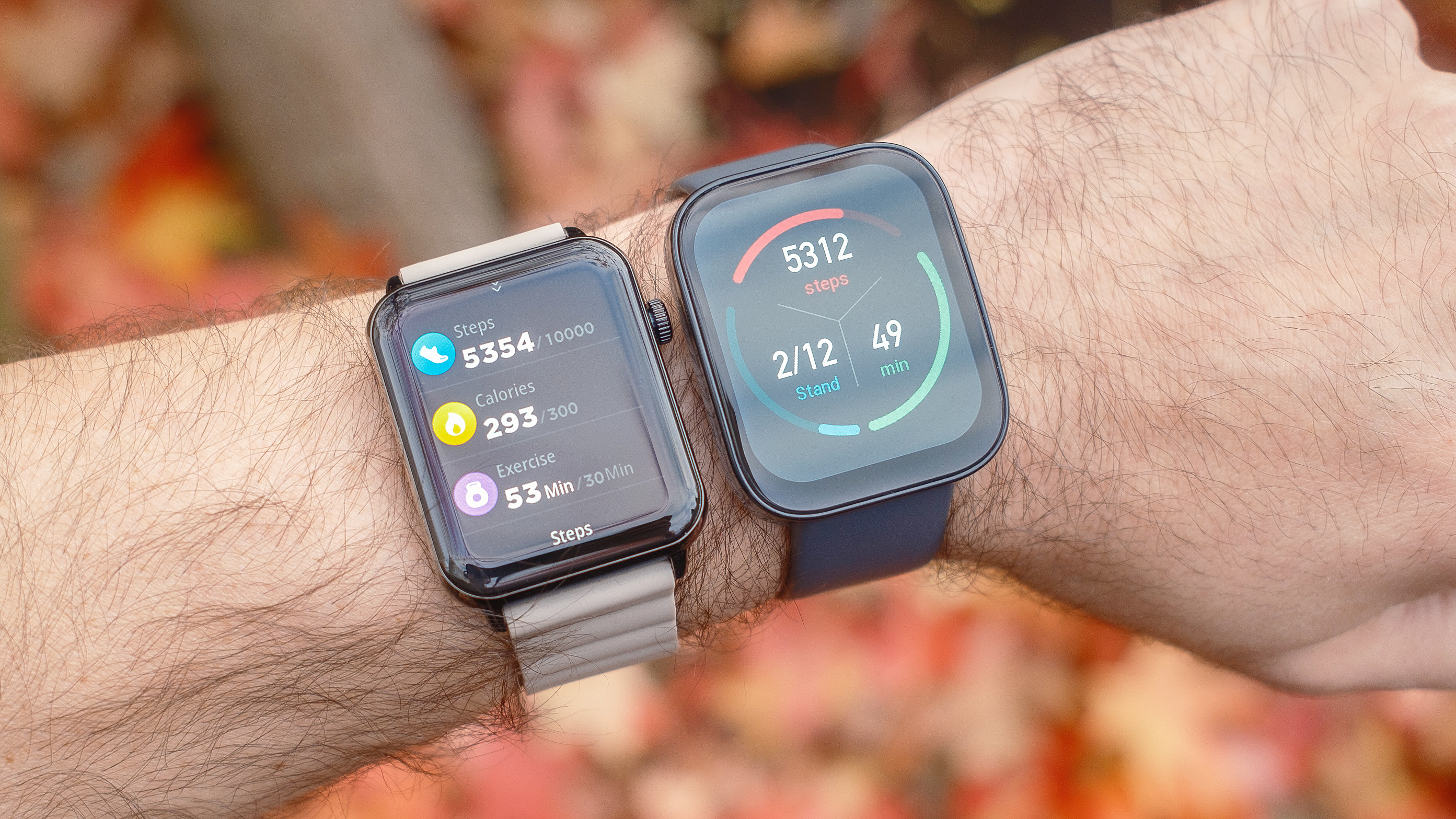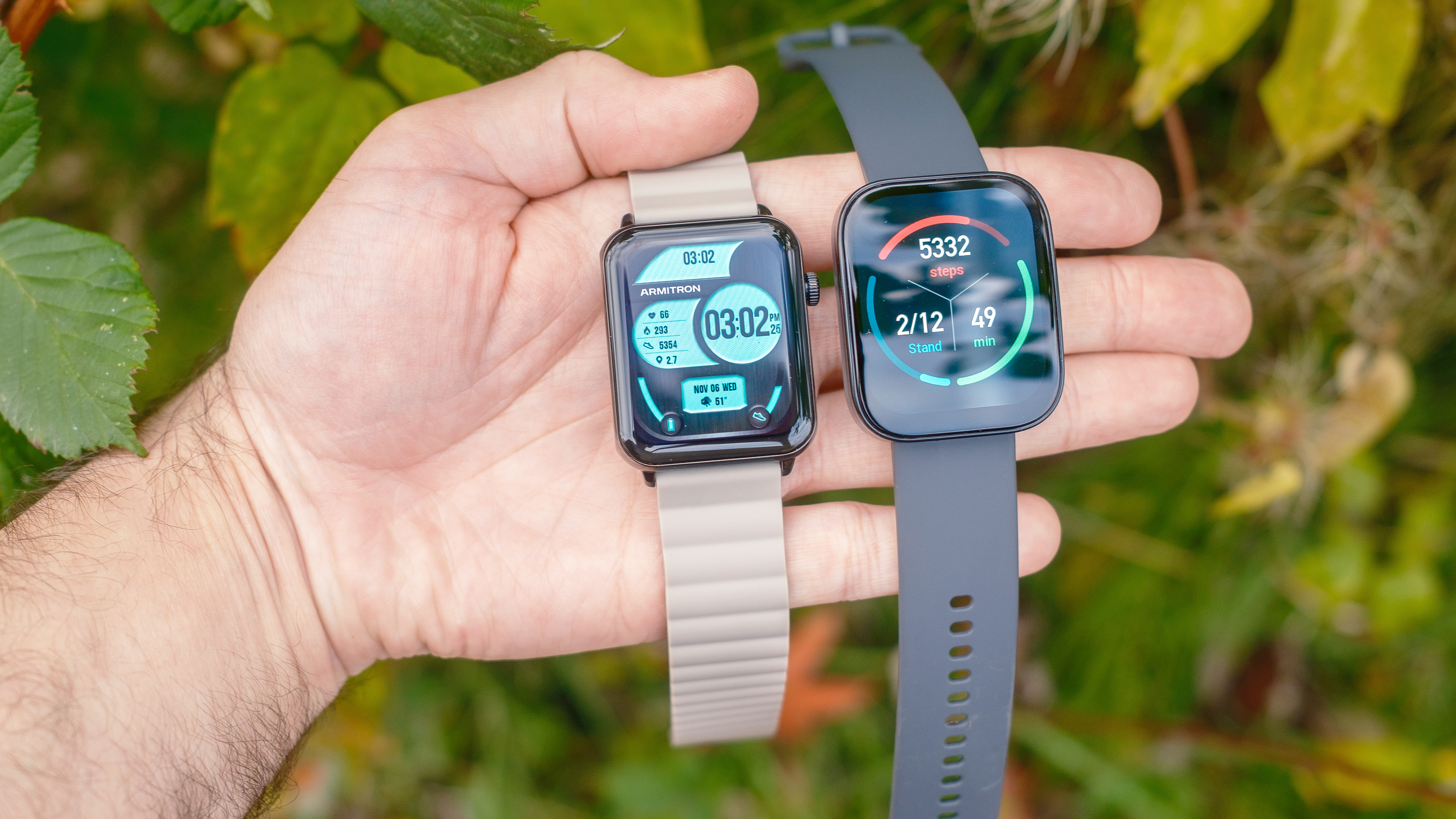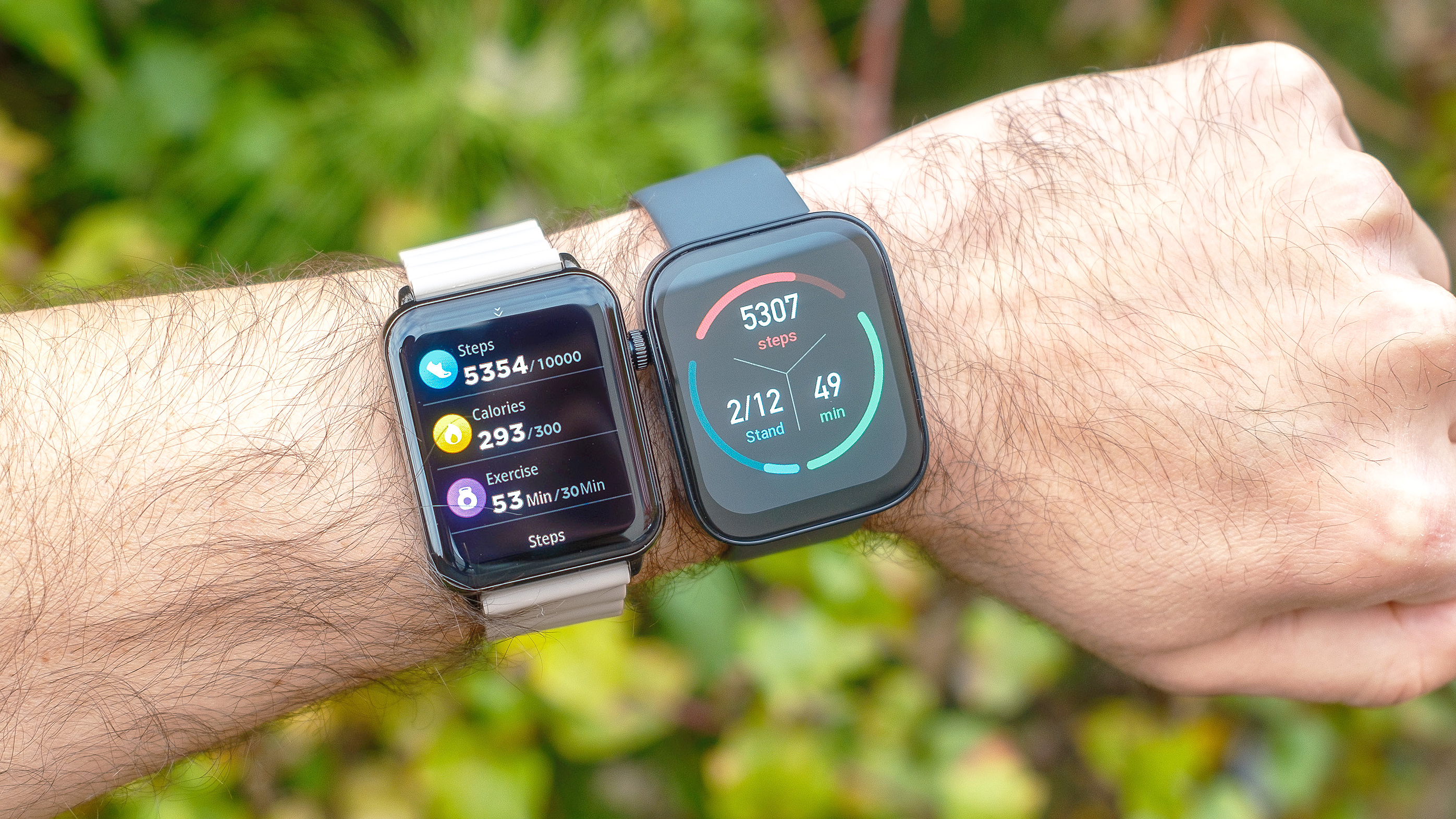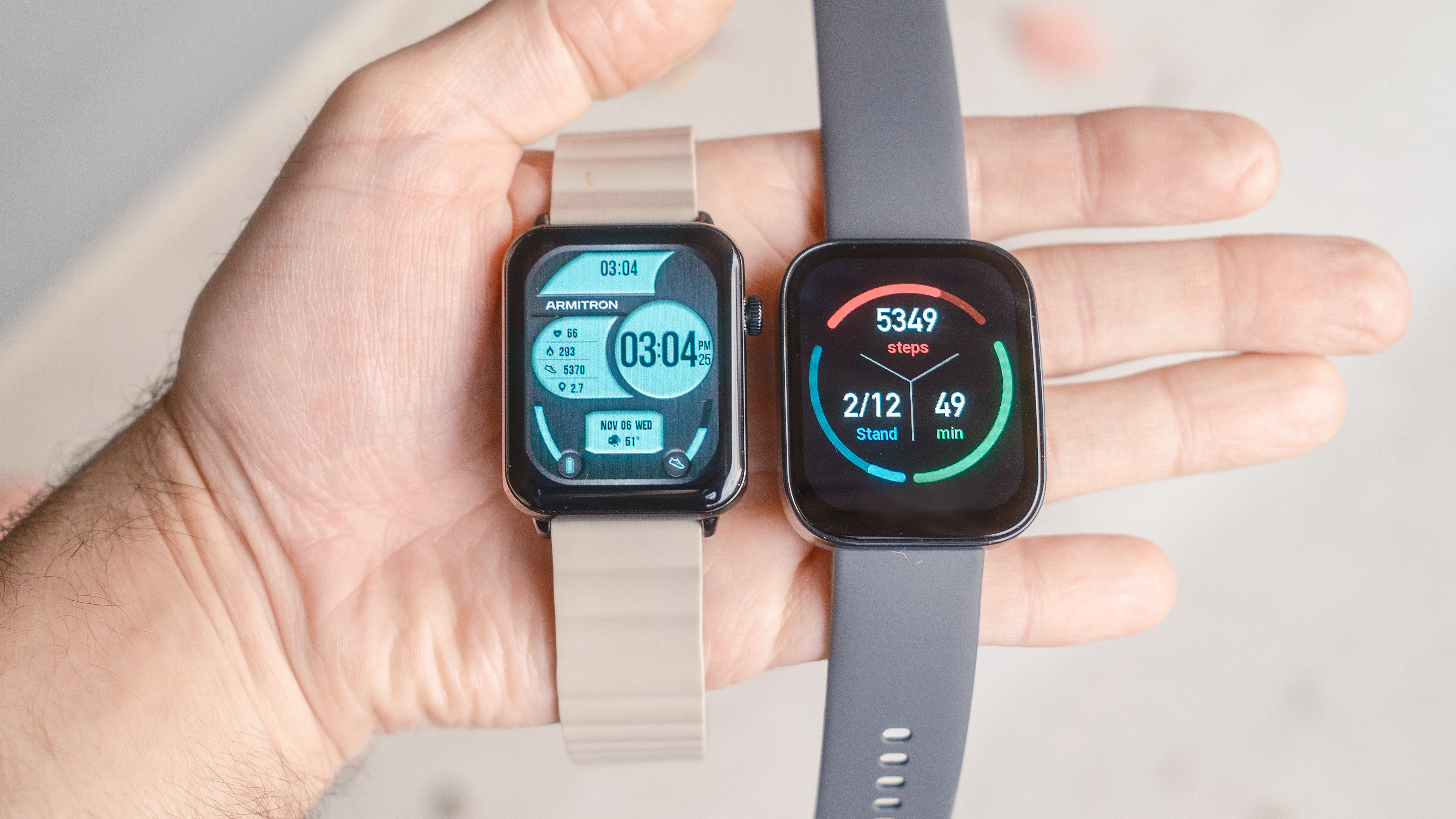
If you’re in the market for an affordable smartwatch capable of tracking your workouts and rest, there’s a good chance you’ve come across the brands Amazfit and/or Armitron. While the former has been in the sub-$100 smartwatch game for several years and offers numerous models on Amazon, Armitron is a brand-new player in the space.
The $89 Amazfit Bip 5 has been available since 2023 and is a device we’ve thoroughly tested against other wearables like the Fitbit Inspire 3 and the Polar Vantage V3, and on its own for our full Amazfit Bip 5 review. From a wellness standpoint, it’s feature-rich and darn accurate at keeping tabs on workouts, making it one of my favorite wallet-friendly fitness-oriented smartwatches.
The Armitron Matrix, on the other hand, is a relatively new device — Armitron entered the smart wearables market this fall — and one I’ve only begun testing. However, it shares an awful lot with the slightly pricier Amazfit, including a similar design, tracking support for a huge number of exercise types, insights into sleep quality, women’s health tracking and mirrored smartphone notifications.
Amazfit Bip 5 vs Armitron Matrix: Features compared

Both smartwatches play nicely with Android and iOS devices. You can also find each at a discounted price without too much hunting. For instance, the Bip 5 is $74 on Amazon right now and the Matrix is $44 via Walmart.
The Armitron has a 1.78-inch AMOLED screen that’s smaller but brighter than the Amazfit’s 1.91-inch LCD display. Both are touch-sensitive. While the Amazfit offers a single physical button along the side of the case, the Matrix has a digital crown that doubles as a button.
Another notable difference involves the Bip’s screen, which is slightly curved compared to the completely flat Matrix display. Still, the two devices are comparable in size, weight and overall wearability. And at a glance, either could pass for an Apple Watch SE.
Battery life is also solid on either model. Plus, you get useful wellness tools like heart rate monitoring and blood oxygen saturation readings.
However, the extra $15 spent on the Amazfit gets you an onboard GPS antenna, something you won’t find on the Armitron. This means that you’ll need to carry a paired smartphone with you for location-tracking data when using the latter to record a workout.
Still, with so much in common, I wanted to find out which device, the Amazfit Bip 5 or Armitron Connect Matrix, is the more competent fitness tracker. So, I strapped one to either wrist and set off on a 5,000-step excursion.
Read on for the results.
Amazfit Bip 5 vs Armitron Matrix: Walk test

Those of you who have read my many previous walk tests can probably skip on right to the results. But, for folks who are new here, this is how things go: I wear two different fitness trackers/smartwatches, synchronize each to begin tracking simultaneously and take off on a walk where I manually count my steps. Once complete, I compare the results.
For this test, I also recorded my walk using the Strava app on my phone. To ensure an accurate manual count, I used an old-school tally counter to record every 100 steps taken.
Amazfit Bip 5 vs Armitron Matrix: Walk test results
Both the Amazfit Bip 5 and Armitron Matrix were within 100 steps of my actual total. This is an impressive result for any fitness tracker, not just budget-oriented ones. By comparison, Strava calculated my total at 5,148 steps. Distance data between the two smartwatches lines up nicely, too.
Sadly, neither watch provided a total elevation gain measure post-workout. Living in a hilly city (Seattle), taking on elevation, whether on foot or a bike, is a major part of my workout routine. And, outside of step count, distance and heart rate, it's the metric I care about most.
I kept a pretty leisurely pace during this walk, and both devices reflect that. Strava, meanwhile, continues to calculate my pace as faster than most smartwatches. I had this experience recently when testing the Apple Watch 10 vs. Pixel Watch 3, and it's likely due to Strava's excellent auto-pause feature that parses even brief stationary moments, like when you stop at a crosswalk, from your moving data.
Heart rate data between the two watches is quite different. While the Amazfit recorded an average and maximum heart rate that largely falls in line with what I would expect from a workout like this, the Armitron's average heart rate is way lower than expected. Worse, no maximum heart rate metric is given.
In fact, across the board, you get way more data points and insights from the Amazfit post-workout report — including details on stride, training load and aerobic vs. anaerobic efforts — than you do from the Armitron Connect app.
Finally, the Bip 5 calculated more calories burned than the Matrix. However, I rarely put much emphasis on this metric, as every smartwatch calculates it differently and few do it terribly accurately. On the flip side, the Armitron used virtually no battery over the course of my 51-minute jaunt.
Amazfit Bip 5 vs Armitron Matrix walk test: Amazfit wins

Ultimately, the Amazfit Bip 5 beats the Armitron Matrix in this step count showdown by just two steps. Both smartwatches provided very accurate results and either device is a great option for keeping tabs on your daily walks.
That said, Armitron's surprisingly low average heart rate metric is a tad perplexing and I intend to find out whether or not the issue persists with further testing. Until then, don't forget to get your steps in.







